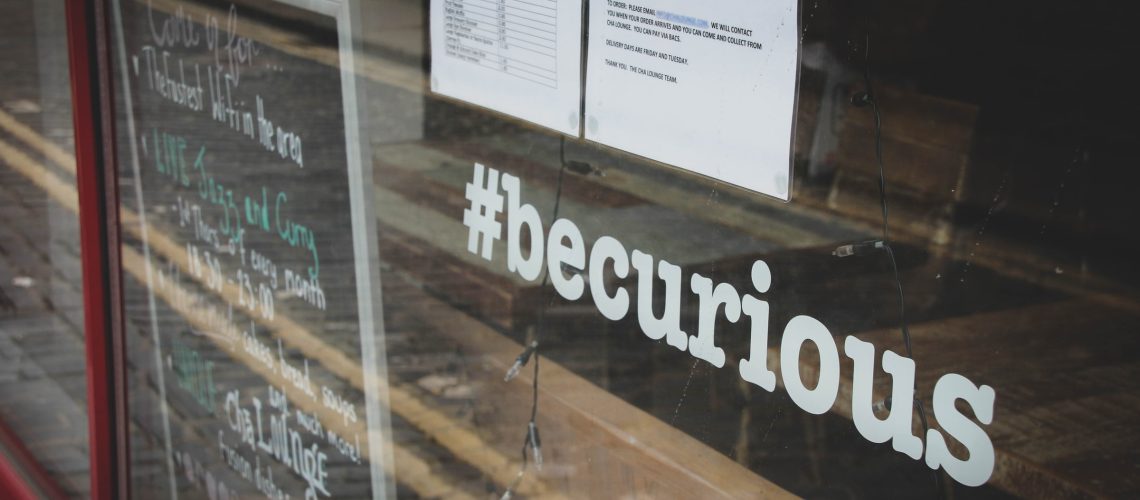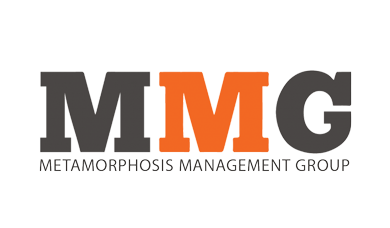‘What If…?’ & ‘How Might We…?’
Leading With Curiosity On Your Teams
As humans, we are naturally curious. In fact, exercising curiosity is core to a growth mindset – and to our individual happiness and well-being, especially at work. Yet surprisingly, as leaders, we often fail significantly to encourage curiosity within our organizations and teams. Why is this – and what are the stakes? What might we do to seed more curiosity (and curiosity-generating behaviors) with our people?
Biologist James Zull explains that we are hard-wired to seek out pleasure and avoid danger. It is the pleasure-seeking part of our self that drives us to explore our world. Curiosity fuels our capacity to learn and grow. Conversely, our hard-wiring also scans regularly for trouble – and seeks safety. This safety-seeking part of our self sends us running for the shelter of familiar routines when we step too far out of our comfort zones.
Most companies – and people – default to playing it safe.
Research suggests that while companies give lip service to encouraging curiosity, most do not walk the talk. Instead, they focus on maintaining predictable routines and efficiency. But to squelch curiosity is to risk stagnation, lower productivity, and create more decision errors.
When employees exercise curiosity they effectively manage shifting conditions and address complex challenges. When creatively solving problems; they make fewer decision errors. Teams that foster curiosity work more collaboratively with colleagues and report less stress. A curious team is a happier and more productive one.
What Does Expressing Curiosity Look Like?
In her TEDx Talk, Francesca Gino, a behavioral scientist and Professor at Harvard Business School, describes curiosity as a mindset. In her talk, she explains that curious people know there is always more to learn. They continue to be humble by acknowledging that there are multiple solutions for every problem that is presented. Gino outlines additional related characteristics associated with curious people:
- having a questioning mind,
- keeping a focus on learning, and
- continually expanding our pursuits and interests.
Todd Kashdan of the Well-Being Lab defines curiosity in more specific terms. Based on his research, Kashdan’s curiosity model identifies five dimensions of curiosity. These offer a set of observable behaviors and skills associated with each dimension.
Kashdan’s Five-Dimensional Model of Curiosity includes:
- Joyous exploration
- Thrill seeking
- Stress tolerance
- Deprivation sensitivity
- Social curiosity
These five dimensions of curiosity are important and descriptive. They directly address the “reward”, and the “what’s in it for me?” feedback that you’ll need when you’re practicing being curious. For each of us, that reward is key to getting more curiosity, to “doing it” by asking more and better questions, again and again. The reward supports building our habit of asking more questions, exploring more broadly, and reaching further. When we experience strong visceral positive rewards, we create a greater likelihood of that we’ll demonstrate more curiosity.
How are you curious – as a person? Take this curiosity quiz

How Can I Nurture Curiosity To Help Create More Success?
Foster an emotionally safe environment that encourages and values curiosity. Support risk-taking and creative idea generation to solve problems, even if the risks and ideas don’t always work.
- Model curiosity yourself as a manager. Cultivate open-ended questions, solicit many points of view, encourage diversity of thinking, read outside your discipline.
- Recognize staff when they show curiosity. Acknowledge and celebrate the generation of many ideas along the way, not just the final, chosen idea at the end.
Four Curiosity Boosting Strategies You Can Try Now
Team meetings are fertile ground for bolstering curiosity (or for squelching it!). Here are a handful of strategies to use during staff meetings to boost your team’s curiosity and stimulate creative exploration.
| Try! | Instead Of |
| Create a Safe Space: Start each meeting with a ground rule of “no bad ideas”. By encouraging team members to listen without judgment to colleagues’ ideas—you will create a “safe” space for team members to be curious. | Shooting down ideas that are not perfect right out of the gate by looking for reasons why a suggestion won’t work—rather than how it could.
Engaging in critical analysis on each idea as it comes up. Full cost-benefit, pro’s-&-con’s real-time, as each idea is generated. |
| Expand & Explore Possibilities: When tackling solutions to problems, ask your team to generate many, varied ideas: “What are some strategies we haven’t tried yet? What do other sectors do that can we learn from? Let’s brainstorm a list of some ’What if’s….? and ‘How Might We’s…?’” | Telling staff how you would like to proceed. Asking team members to suggest only the “best” solutions to the problem.
Moving to action on the first idea – an unfortunate reflex that Michael Bungay-Stanier identifies as “first-idea-itis” |
| Go Deep: When responding to team member suggestions, ask them: “Tell me more about how you think this may work?” | Reacting immediately to suggestions with critical judgements: “That’s a good idea” or “That’s a bad idea” |
| Cultivate Collective Decision Making: When wrapping up meetings, ask your team: “What questions remain for you and for us?” | Asking “Does anyone have any questions?” |
CAUTION: Of course, as essential as curiosity is for maximizing the potential of your team, you’ll still recognize moments when “expressing curiosity” is not the top priority. One wrong moment might be immediately after your team has decided to take a course of action. Another might be when they are set to efficiently complete a task, just ahead of meeting a looming deadline. As a manager, you will want to consider when to push for more curiosity and when to ask your team to temporarily “park” curiosity to focus in on completion of tasks (or decisions already made).
Curious Whether This Really Works?
Once you have tried some of these new approaches, what changes might you notice? Here are some Look Fors to let you know you‘re on the path to cultivating a team practicing more curiosity!


With Time, Are Team Members:
- More willing to share their ideas and questions during team meetings?
- More willing to listen to, and build on, colleagues’ suggestions?
- Generating more creative, innovative solutions to persistent problems?
- Generating more ideas overall (more volume)?
- Demonstrating more collegiality, support, and collaboration with other team members?
Curious To Try New Practices With Your Teams?
Repetition is the mother of skill. You’ll want to practice, practice, practice – repeatedly exploring how to ask more and better questions, noticing what works to invite others in, engage them, and create more curiosity. Then: lather, rinse, repeat.
- Re-imagine your team meetings as opportunities to solve problems creatively. Dropping your “standard” check-in agenda and using new idea-supporting ground rules will dramatically shift the culture of your team to become more curious, collaborative, and productive. Here are some ground rules to consider as you get started.
- Encourage team members to develop their own interests and questions. Here’s a useful guide (HBR, “The Surprising Power of Questions”); Mike Vaughn, “How to Ask Better Questions”, TEDxMileHigh (starting at minute 5:15) also provides helpful reminders.
- Finally, keep working on your own approach to leading with questions – to modeling curiosity–to help stimulate and engage others on your team. Many great resources will help to provoke and inspire you to create and use new questions.
PLEASE LET US KNOW what the next small-AND-mighty step you’ll take to provoke more curiosity and inquiry on your team – and what tactics/ approaches are working best for you.
| Wendy Surr LinkedIn | https://wendysurr.academia.edu/ | [email protected]
Wendy B. Surr is a senior research consultant and project director with 30 years’ experience leading research and evaluation studies, state and local education change initiatives, and technical assistance and professional training with educators. She specializes in assessment systems designed to promote and measure learner-centered practices and associated deeper learning and 21st century skills. She’s published many research studies and authored numerous reports including Teachers Making the Shift to Equitable, Learner-Centered: Harnessing Mental Models, Motivations and Moves – and holds a B.A. in Psychology from Bard College and an M.A. in Early Childhood from Tufts University. |
Evan Smith LinkedIn | www.metamg.com | [email protected]
Evan founded and operates MMG. Currently: In service of greater outcomes (and more value transferred to day-to-day work) he works actively to help leaders and organizations close “The Last Mile” (the Knowing-Doing Gap) between Great Ideas (training, coaching, strategy, workshops, communication) – and real change for leaders & their people. To get these outcomes, he uses a structured behavior change approach and data-driven platforms/ applications. See the benefit of a more direct line-of-sight between your Great Ideas and Real Business Outcomes? |
Resources
- Chamorrow-Premuzic, T. (2015). “Assessment: What’s Your Curiosity Profile?” Harvard Business Review. Retrieved from: https://hbr.org/2015/12/assessment-whats-your-curiosity-profile
- Fernandez, A. (2006). “The Art of Changing the Brain: An Interview With Dr. James Zull.” Sharp Brains. Retrieved from: https://sharpbrains.com/blog/2006/10/12/an-ape-can-do-this-can-we-not/
- Gino, F. (2018). “The Business Case for Curiosity.” Harvard Business Review. Retrieved from: https://hbr.org/2018/09/the-business-case-for-curiosity?autocomplete=true#the-five-dimensions-of-curiosity
- Gino, F. (2021). “The Power of Why: Unlocking a Curious Mind.” TedX Trento Studio. Retrieved from: https://www.ted.com/talks/francesca_gino_the_power_of_why_unlocking_a_curious_mind
- Kashdan, T. (2022). “What Does Curiosity Have To Do With Well Being?” The Well-Being Lab. Retrieved from: https://toddkashdan.com/curiosity/
- Kashdan, T., Disabato, D., Goodman, F. and Naughton, C. (2018). “The Five Dimensions of Curiosity.” Harvard Business Review. Retrieved from: https://hbr.org/2018/09/the-five-dimensions-of-curiosity
- Bungay-Stanier, M. (2010), Do More Great Work, Workman Publishing Company


